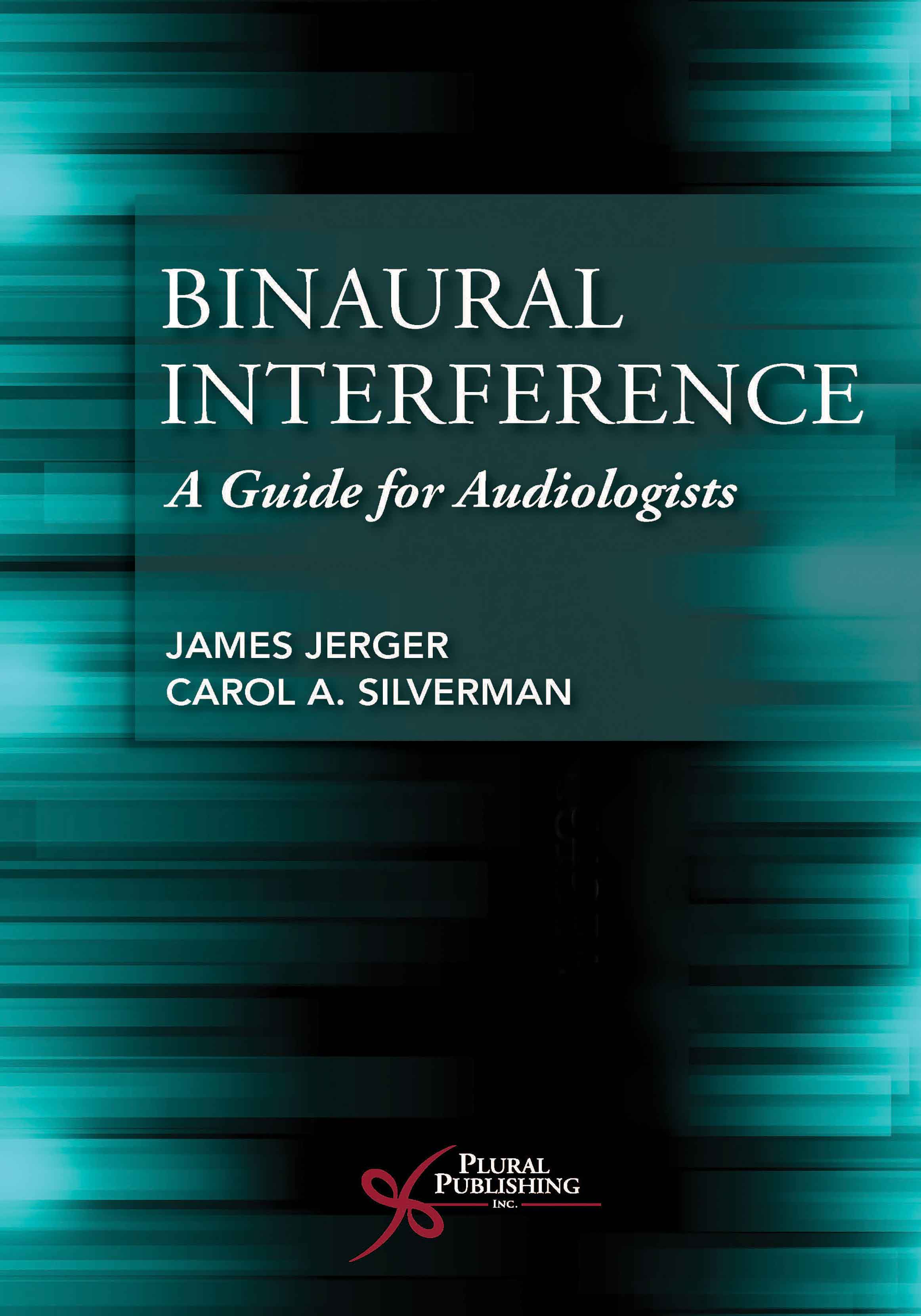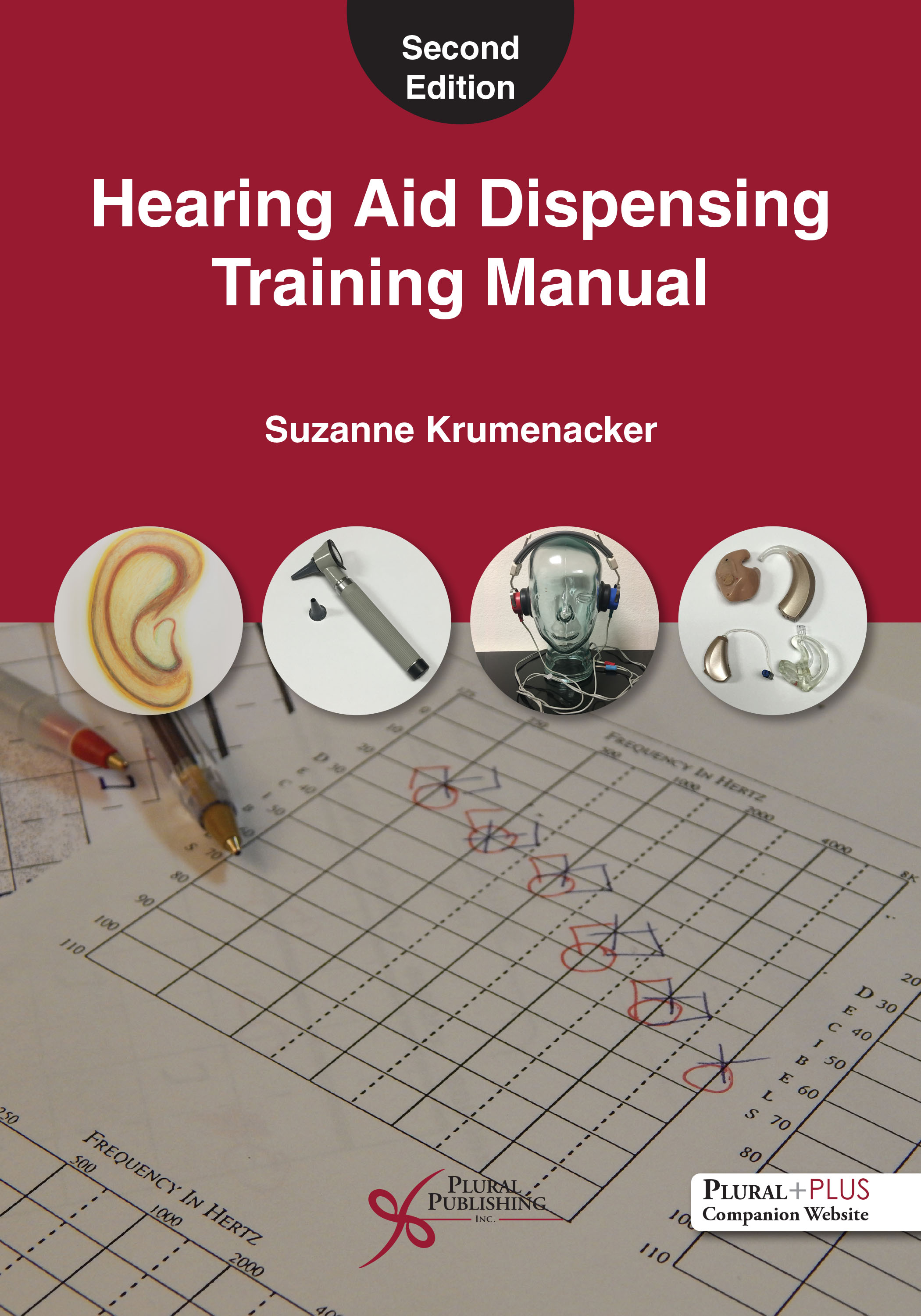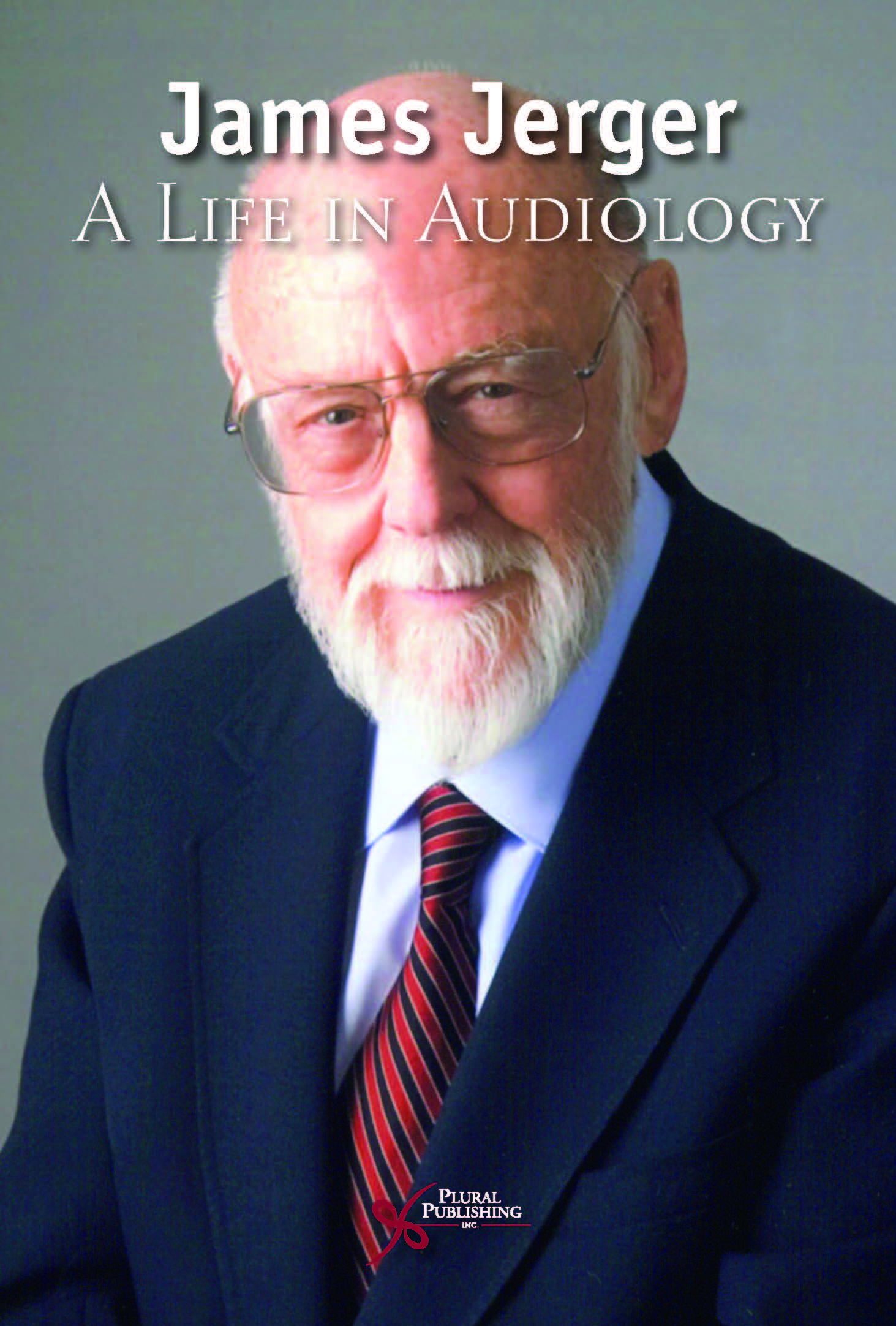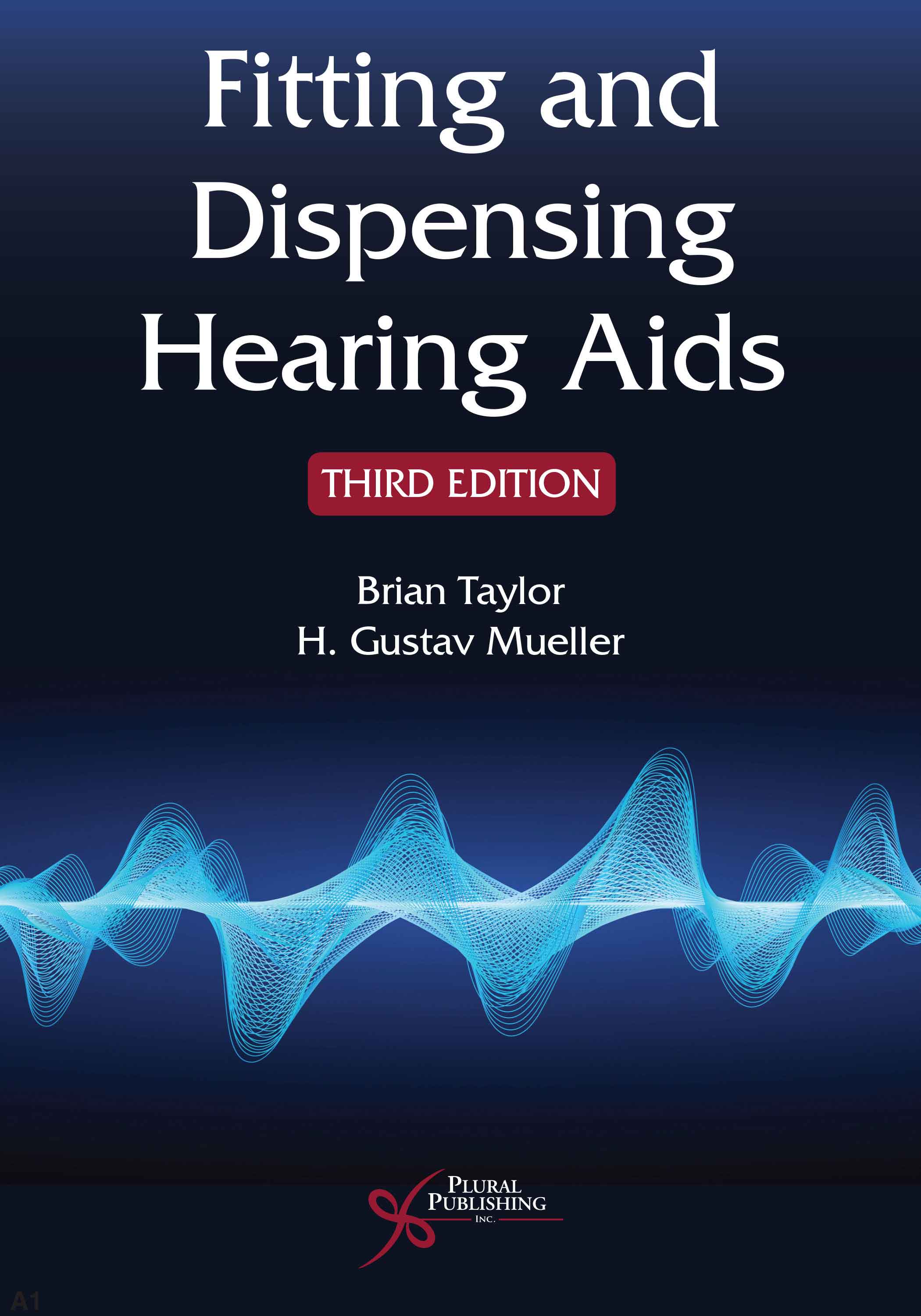
Binaural Interference: A Guide for Audiologists
First Edition
James Jerger, Carol A. Silverman
Details: 124 pages, B&W, Softcover, 6" x 9"
ISBN13: 978-1-63550-076-9
© 2018 | Available
Purchase
Binaural interference occurs when the speech input to one ear interferes with the input to the other ear during binaural stimulation. The first published study on binaural interference twenty-five years ago demonstrated that some individuals, particularly older individuals, perform more poorly with two hearing aids than with one and/or more poorly with binaural than monaural stimulation on electrophysiologic as well as behavioral measures. Binaural interference is relevant to every audiologist because it impacts the successful use of binaural hearing aids and may explain communicative difficulty in noise or other challenging listening situations in persons with normal-hearing sensitivity as well as persons with hearing loss.
This exciting new book written by two highly respected audiologists first traces the history of its study by researchers, then reviews the evidence, both direct and indirect, supporting its reality. This is followed by a discussion of the possible causes of the phenomenon and in-depth analysis of illustrative cases. The authors outline a systematic approach to the clinical detection, evaluation and amelioration of individuals who exhibit binaural interference. Suggestions are furnished on improved techniques for evaluation of the binaural advantage in general and on sensitized detection of the disorder in particular. The book ends with recommendations for future directions.
Given the adverse impact of binaural interference on auditory function and its occurrence in a significant subset of the population with hearing loss, as well as in some individuals with normal-hearing sensitivity, research on binaural interference only recently has begun to flourish, and adaptation of audiologic clinical practice to identify, assess, and manage individuals with binaural interference has yet to become widespread. The authors intend for the book to provide impetus for pursuing further research and to encourage audiologists to explore the possibility of binaural interference when patient complaints suggest it and when performing audiologic evaluations.
The book is intended for practicing clinical audiologists, audiology students, and hearing scientists.
Reviews
"As the editor in chief of ''Canadian Audiologist'' it is my responsibility to select reviewers for new publications. Typically this can be like pulling teeth but for Binaural Interference: A Guide for Audiologists there was a deluge of volunteer reviewers. I first thought of playing King Solomon who threatened to divide a baby in biblical times by cutting up the book and sending a bit to each of the reviewers, but I decided to keep the book to myself to review. Binaural interference has been described in the literature as early as 1939 and refers to the fact that, in some individuals, speech entering one ear interferes with the same speech coming into the other ear. This has ramifications for hearing aids, where two hearing aids may not result in a binaural fitting. This short 124-page book has 7 chapters, each of which is concise and well-written. In some other hands this book undoubtedly would have been needlessly longer, but Doctors Jerger and Silverman get directly to the point. Having said this, the book is very easy to read and the literature review proceeds as a very logical story line. Each chapter ends with a summary. Chapters 1-3 provide a history of the discovery that perhaps the brain cannot always properly synthesize the information from the two ears. There is a clear discussion of the direct and the indirect evidence of binaural interference with a review of the possible causes. This may in part be related to cochlear sensory asymmetries or asymmetrical function in the neural processing between the two ears, including the role of the corpus callosum. Chapter 4 provides some illustrative examples of binaural interference for people with age-related sensori-neural hearing loss and with neural involvement. Chapter 5 deals with the clinical evaluation of binaural interference and chapter 6 deals with future directions touching on some possible methods to begin assessing this. The final chapter (7) has the title of Lessons Learned. It provides a clinically relevant summary of what the audiologist needs to know to assess, and be on the look-out, for the possibility of binaural interference with their clients. This book, which I highly recommend, dovetails nicely with another book by Dr. Jerger- James Jerger: A Life in Audiology (Plural Publishing, Inc.). This is a delightful book about Dr. Jerger's professional life where there are frequent hints about his long-standing interest in binaural interference."
—Marshall Chasin, AuD, Editor-in-Chief, in Canadian Audiologist (Vol. 5, Issue 3, May 2018)
"This is a really thought-provoking book that forces the reader to contemplate beyond the norms on so many levels. Unlike typical Jerger books, this is a very light read and I managed to finish all 100+ pages in a straight 3-ish hours on a train journey as I could not put it down after starting it. It was a bit like a crime thriller, trying to find the true nature of the culprit, which here is binaural interference. Binaural interference is guilty of making binaural fittings worse than monoaural. So, the concept here is that some of your clients who have been given two hearing instruments may actually benefit more when they only use one. Sounds bizarre at the outset but there is plenty of support provided in the form of new and old evidence for this argument in the book... There are several beautiful illustrations in the book. I particularly liked the flawless flow of information that keeps the reader engaged in a virtual conversation and curious about what is to come next."
—Jay Jindal, AuD, FSHAA, in the British Society of Hearing Aid Audiologists' BSHAA People (October 2018)
"This book details what binaural interference is, it looks at the basic principles of this topic and follows the research over the years that has gone into investigating what causes binaural interference. It makes for an interesting read, covering a topic that, within audiology, is a very interesting phenomenon. It is very easy to follow and read, and it breaks down each study in detail looking at the pros and cons while discussing the relevance of each study."
—Rebecca Day, in ENT & Audiology News (July 2019)
Preface by James Jerger
Preface by Carol A. Silverman
Chapter 1. A Brief History of Binaural Interference
Vern O. Knudsen
Group Studies
Case Reports
Mirabile Dictu-Knudsen Redux
Summary
Chapter 2. Indirect Evidence of Binaural Interference
Simulating the Effects of Asymmetric Signal Degradation
Retrospective Surveys
Field Trials
Summary
Chapter 3. Possible Causes of Binaural Interference
The Wiring Diagram of the Auditory System
Possible Sources of Binaural Interference
Prolonged Unilateral Deprivation
Age-Related Changes in Interhemispheric Transfer via the Corpus Callosum
Interaural Pitch Mismatch and Binaural Fusion Due to Hearing Loss
Summary
Chapter 4. Illustrative Cases
Case Reports
Case #1: Elderly-Gradual Onset of Hearing Loss
Case #2: Elderly-Left-Sided Cerebrovascular Insult
Case #3: Elderly-Gradual Onset of Mild Hearing Loss
Case #4: Elderly-Gradual Onset of Hearing Loss Following Aspirin Therapy
Summary
Chapter 5. Clinical Evaluation of Binaural Interference
Previous History of Testing for Binaural Interference
Configuration of Test Chamber
A Two-Stage Approach
Screening
Follow-Up Testing
History
Some Issues Relating to Testing with Hearing Aids
Summary
Chapter 6. Future Directions
What Is the Best Way to Measure Binaural Advantage?
Importance of Directionality
Cued Listening
In Search of a Pitch Mismatch and Abnormal Binaural Fusion
Summary
Chapter 7. Overview
Lessons Learned
Summary of the Book
Screening Protocol
Follow-Up Protocol if Screening Is Failed
References
Index

Essentials of Modern Hearing Aids: Selection, Fitting, and Verification
First Edition
Todd A. Ricketts, Ruth Bentler, H. Gustav Mueller
Details: 888 pages, B&W, Hardcover, 8.5" x 11"
ISBN13: 978-1-59756-853-1
© 2019 | Available

The Audiologist's Handbook of Intraoperative Neurophysiological Monitoring
First Edition
Paul R. Kileny
Details: 195 pages, Full Color, Softcover, 4.5" x 8"
ISBN13: 978-1-59756-343-7
© 2018 | Available

Comprehensive Dictionary of Audiology: Illustrated
Third Edition
Brad A. Stach
Details: 349 pages, B&W, Softcover, 7" x 10"
ISBN13: 978-1-94488-389-8
© 2019 | Available

Hearing Aid Dispensing Training Manual
Second Edition
Suzanne Krumenacker
Details: 220 pages, B&W, Softcover, 7" x 10"
ISBN13: 978-1-63550-131-5
© 2019 | Available

Compression for Clinicians: A Compass for Hearing Aid Fittings
Third Edition
Theodore H. Venema
Details: 416 pages, B&W, Softcover, 6" x 9"
ISBN13: 978-1-59756-987-3
© 2017 | Available

Speech Mapping and Probe Microphone Measurements
First Edition
H. Gustav Mueller, Todd A. Ricketts, Ruth Bentler
Details: 320 pages, B&W, Softcover, 7" x 10"
ISBN13: 978-1-94488-394-2
© 2017 | Available

Pediatric Amplification: Enhancing Auditory Access
First Edition
Ryan W. McCreery, Elizabeth A. Walker
Details: 272 pages, B&W, Softcover, 8.5" x 11"
ISBN13: 978-1-59756-992-7
© 2017 | Available

James Jerger: A Life in Audiology
First Edition
James Jerger
Details: 144 pages, B&W, Softcover, 6" x 9"
ISBN13: 978-1-94488-368-3
© 2017 | Available

Sandlin's Textbook of Hearing Aid Amplification: Technical and Clinical Considerations
Third Edition
Michael J. Metz
Details: 776 pages, B&W, Softcover, 7" x 10"
ISBN13: 978-1-59756-563-9
© 2014 | Available

Audiology in the USA
First Edition
James Jerger
Details: 128 pages, B&W, eBook
ISBN13: 978-1-59756-868-5
© 2009 | Available

Fitting and Dispensing Hearing Aids
Third Edition
Brian Taylor, H. Gustav Mueller
Details: 550 pages, B&W, Softcover, 7" x 10"
ISBN13: 978-1-63550-210-7
© 2021 | Available

Audiological Research Over Six Decades
First Edition
James Jerger
Details: 195 pages, B&W, Softcover, 6" x 9"
ISBN13: 978-1-63550-370-8
© 2022 | Available

Music and Hearing Aids: A Clinical Approach
First Edition
Marshall Chasin
Details: 146 pages, B&W, Softcover, 6" x 9"
ISBN13: 978-1-63550-395-1
© 2022 | Available


